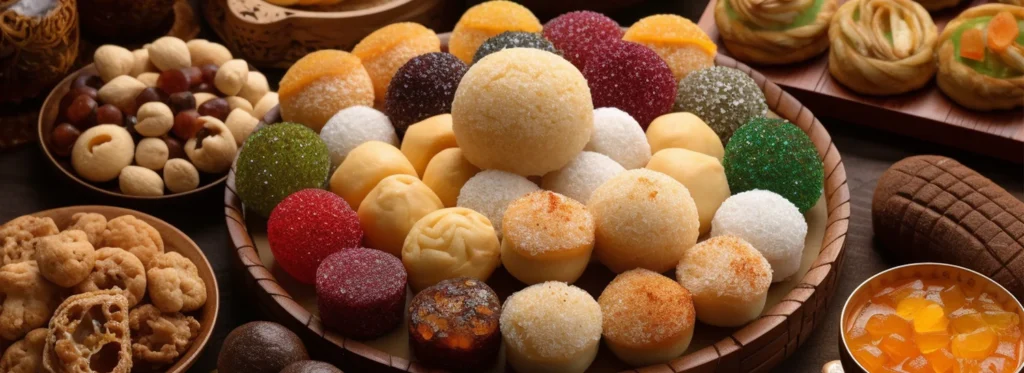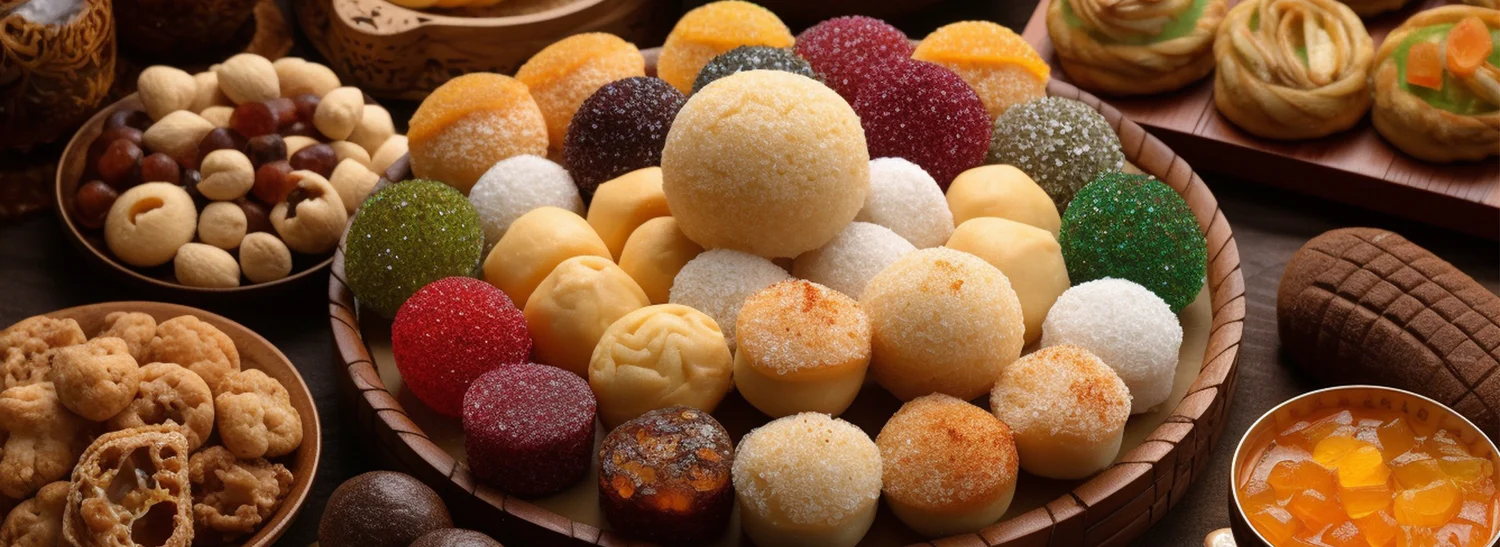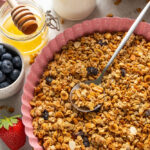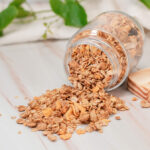When we talk about sugars we are referring to the term “free sugars”; which means sugar added to food and drinks. Mithai and desserts hold significant cultural prominence among South Asian communities, often featuring in daily meals and celebratory gatherings. However, these delicacies typically contain high sugar levels, with a single jalebi, for instance, containing as much as four teaspoons of sugar. The prevalence of sugary beverages like desi chai further contributes to sugar consumption, potentially leading to adverse health outcomes such as weight gain and tooth decay.
Common High-Sugar South Asian Foods:
- Barfi, Jalebi, Laddu, Gulab Jamun
- Rasmalai, Halwa, and Kheer
- Sweetened drinks like Rus and Lassi, are emblematic of South Asian culinary traditions and are often laden with sugar.
Tips to Reducing Sugar Intake:
- Portion Control: Practicing moderation by consuming smaller portions of mithai and desserts can help limit sugar intake.
- Culinary Adaptations: Adjusting homemade dessert recipes to include less sugar can significantly reduce overall sugar consumption.
- Limiting Gurr/Jaggery: Restricting the use of traditional sweeteners like gurr and jaggery aids in lowering sugar intake.
- Taste Bud Adjustment: Gradually decreasing sugar content in beverages over several weeks can help acclimate the palate to lower sweetness levels.
- Personal Challenges: Setting achievable goals, such as reducing sugar quantity in beverages, encourages sustained behavior change.
Recommended Sugar Intake:
Both men and women are advised to limit free sugar intake to approximately 5% of daily calorie intake, equivalent to about 30 grams or 5-7 teaspoons. This encompasses sugars from mithai, desserts, beverages, as well as natural sources like honey and fruit juices.
‘No Sugar’ ‘Diet’ – drinks
Diet’ and ‘No sugar’ drinks use sweeteners and there is a lot of scare around them. There is strong evidence to suggest that sweeteners are safe to use. Particularly people with Type 2 diabetes can use them without raising their sugar levels.
Tips for children
- Encourage your children to go for water, low fat milk, diet or sugar free drinks rather than opting for fizzy drinks or squashes. Allow them to have up to 150 ml of fruit juice in a day.
- Try keeping foods high in sugar out of sight and make healthier foods visible. If the only food available as a snack is fruit, vegetables and yogurts they are bound to have them.
- Go for unsweetened cereal and for sweetness add fruits such as bananas or berries.
- Always read labels. Sometimes some things may seem healthy but reading the nutritional information can give real insight into the product.
- Don’t reward a child with chocolate and cookies. That will develop a habit of having foods high in sugar every time they achieve something; rather reward them with a sticker, a toy, a day out or even a hug.
Jaggery:
A teaspoon of jaggery contains the same number of calories as a teaspoon of white sugar. While jaggery does offer trace amounts of magnesium, manganese, and iron, reaping the benefits of these nutrients requires consuming jaggery in significant quantities, thereby increasing overall calorie intake. Essentially, jaggery does not offer any notable advantages over white sugar.
Brown Sugar:
Similarly, brown sugar shares the same calorie content as white sugar, with both containing 16 calories per teaspoon. Brown sugar retains some molasses during processing, lending it a slightly higher moisture content. While this imparts minor
Conclusion:
By adopting mindful consumption practices and implementing practical strategies for reducing sugar intake, individuals can prioritize health while honoring cultural culinary traditions. Empowering individuals with knowledge and actionable steps is essential for fostering healthier dietary habits within the South Asian community








1 Comment
Sam
February 7, 2024Testing